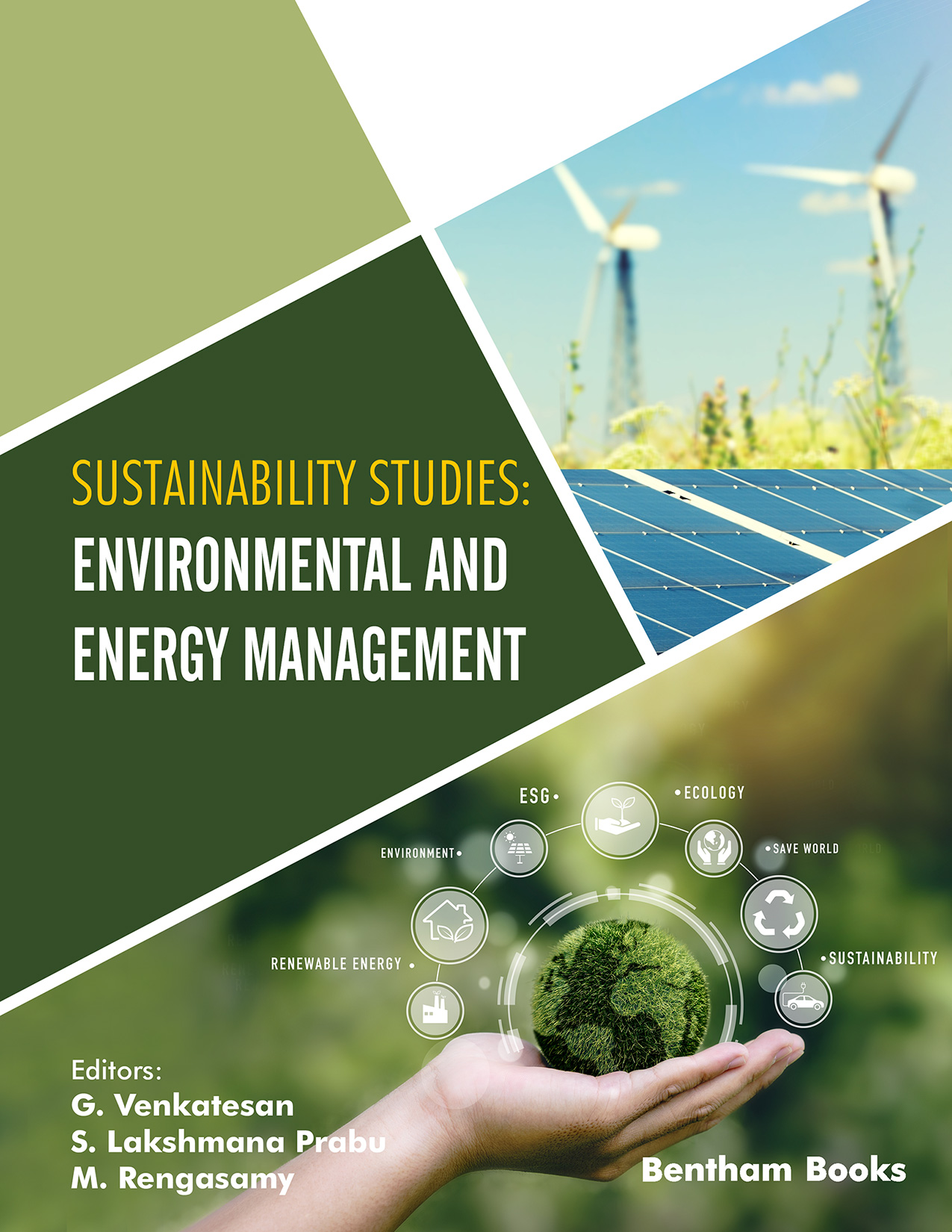The purpose of this book, “Sustainability Studies: Environmental and Energy Management” is to provide a continuous state-of-the-art critical view of the current knowledge of the environment and energy management. Recent Global warming, heat around the earth, pollution, unpredicted atmosphere changes, and contaminants such as physical and biological components severely affect the normal environment. There are no boundaries observed for these environmental stressors and pollution. Recently these two factors have been considered to have a significant role environmental as well as energy management.
This book covered various topics related to the fundamental nature of contaminants, their measurements, characterization and different techniques for their removal.
With this idea, we have chosen authors from different countries with varied backgrounds who could add the issues and solutions which provide the readers an understanding of global issues in a comprehensive better manner. In the beginning, a country or a person who has an interest in environmental and energy management can build a platform. It is imperative that we can build a strong management system globally.
The diversity of authors helps us disclose the advances in environmental and energy management worldwide. Their inputs will let the readers know about the problems and issues faced by academic individuals, industries, and research institutions and the directions for future prospects.
This book presents a complete lookout to provide a source of information on all facets of environmental and energy management for undergraduate and post-graduate students, researchers both industrial and academicians in the field of environmental and energy management.
As the editors of this book, we are sure that the book chapters surely guide the students and researchers with unexplored avenues and future perspectives in environmental and energy management to identify promising solutions that might represent future solutions in these critical areas.
Jeeva Chithambaram authored a chapter titled “Alternative building materials-Road to Sustainability” where they discussed the building materials which are made from industrial waste as conventional building materials for sustaining the environment from degradation.
The chapter titled “preparation of environmental friendly thin films using SILAR method” by mani describes how thin films are prepared by the SILAR method, adopting some simple adsorption and reaction of the ions from the solution as a chemical method.
Shenbagavadivu has written a chapter on “Smart waste management to enrich cleanliness and reduce pollution in environment”. They conversed about the importance of solid waste management to safeguard public health by adopting a smart solid waste management system for garbage collection to enhance environmental sustainability which can render support to the economic growth of the Nation.
The chapter titled “A new philosophy of production” is written by Markic. It discusses the growth and development of society on our planet by the consumption of natural resources which lead to increase the production of waste and other substances which are harmful for both human beings as well as the ecosystem. Considering the several factors such as circular economy, industrial ecology, ecological economy, blue economy, biomimicry, cradle to cradle, cleaner production and regenerative design, they discussed the approach to production to ensure that man functions in accordance with natural laws, and that we need to leave nature and the environment in a much better condition than we inherited.
Lakshmana Prabu and Thirumurugan authored a chapter titled “Remediation approaches for the degradation of textile dye effluents as sustaining environment”. They have deliberated on the impact of textile dye effluents and different remediation approaches in order to maintain the sustainability of this environment in near future.
The chapter titled “A comparative adsorption study of acid violet 7 and brilliant green dyes in aqueous media using rice husk ash (RHA) and coal fly ash (CFA) mixture” is written by Irvan. They demonstrated the adsorption of dyes such as acid violet 7 (AV7) and brilliant green (BG) in the mixture of rice husk ash (RHA) and coal fly ash (CFA) as adsorbents and highlighted that RHA-CFA can act as a very good adsorbent to remove AV7 and BG from aqueous medium.
Ashok Kumar discusses the “Pollution Prevention Assessments: Approaches and Case Histories” in Ohio, USA. This chapter focuses on pollution prevention by applying the concept of energy efficiency, energy savings, greenhouse gas emission (GHG) reductions, waste reduction, and stormwater management.
The chapter “Threats to sustainability of land resources due to aridity and climate change in the northeast agro-climatic zone of Tamil Nadu, South India” by Dhanya is based on the Aridity Index.
It was a great experience to write and edit this book. We acknowledge the full support of all the authors and specially thank particularly the support extended by Bentham Science and their team had been extremely supportive in the completion of this book.
Dr. G. Venkatesan
Department of Civil Engineering
University College of Engineering (BIT Campus)
Anna University
India
Dr. S. Lakshmana Prabu
Department of Pharmaceutical Technology
University College of Engineering (BIT Campus)
Anna University
India
&
Dr. M. Rengasamy
Department of Petrochemical Technology
University College of Engineering (BIT Campus)
Anna University
India

